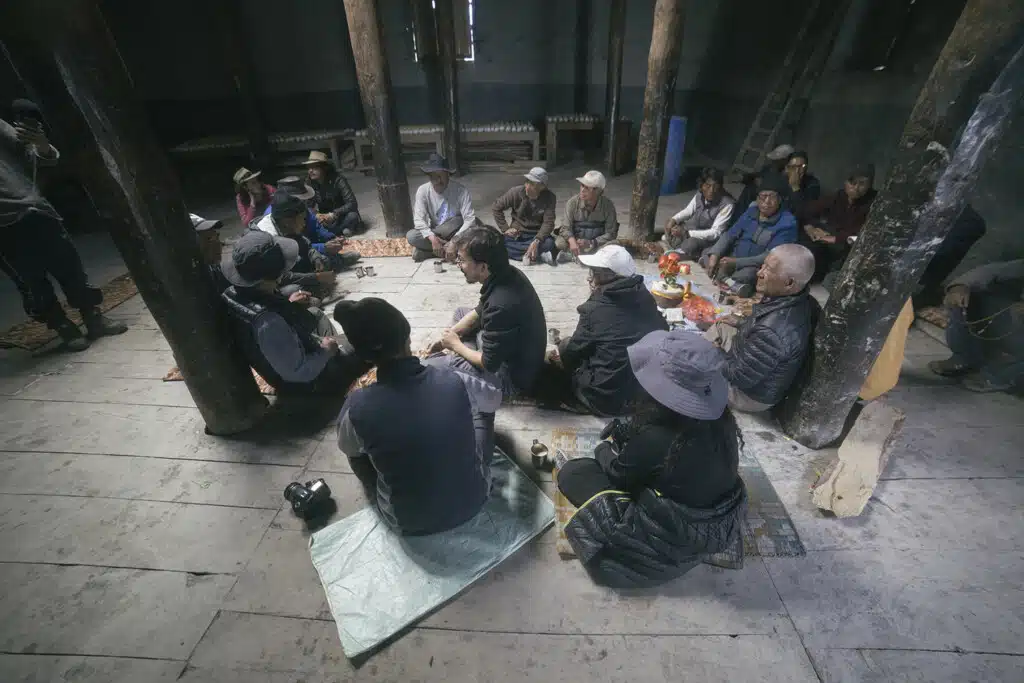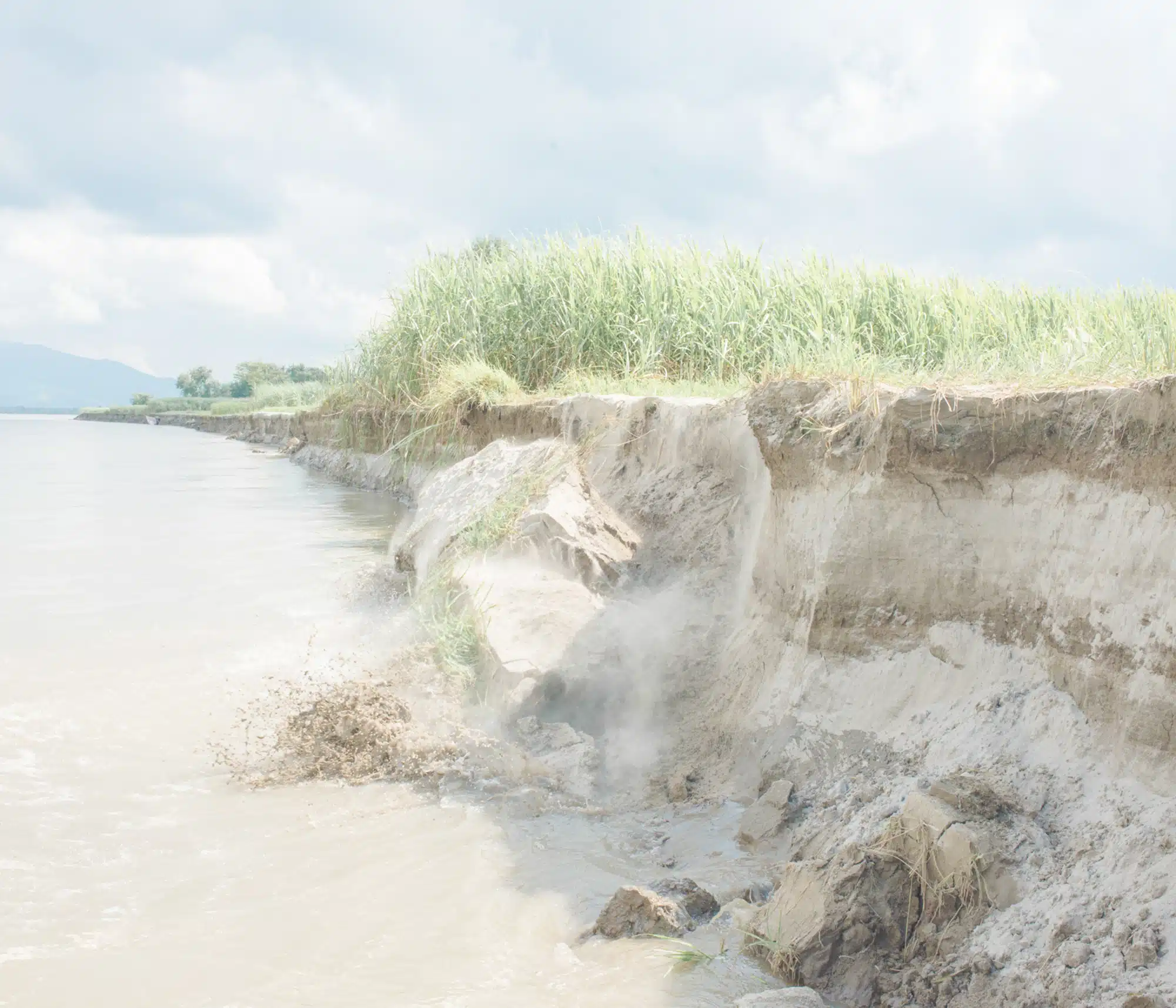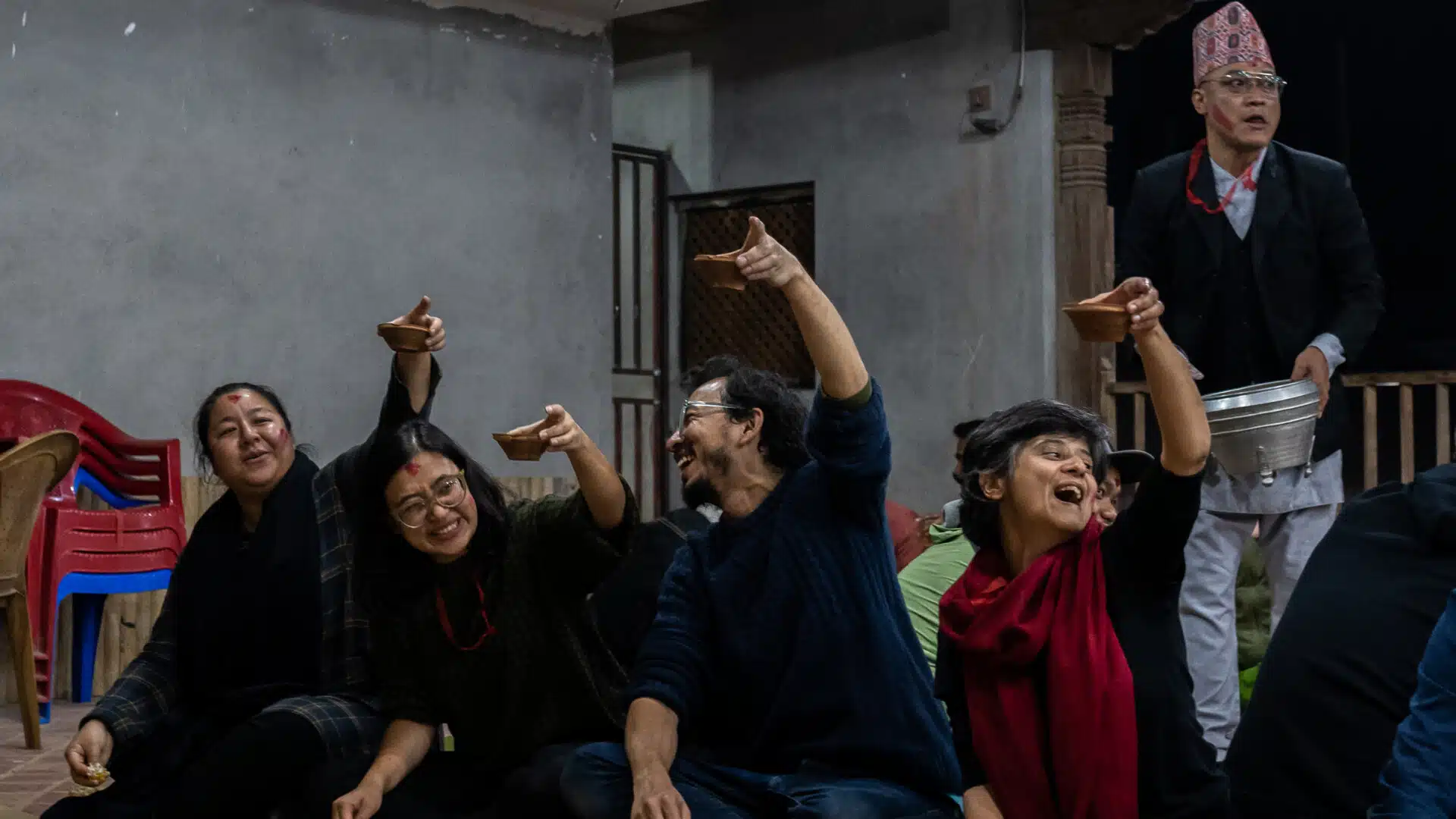Photographs take the form of short stories in the hands of Nepali artist Prasiit Sthapit. From capturing the idiosyncratic cultural practices such as the the festival of Mane Chokpa, in which mourning combines with erotic ritual, to documenting cases of missing Nepali migrant workers in South-East Asia and the complicated local attitudes towards the development of border zones between Nepal and its neighbours, Sthapit’s photographs have become a poetic archive of contemporary Nepal, preserving all that might be untold or forgotten in photographs that have the watery characteristic of memory.
Here we speak to the artist, 2016 recipient of the Magnum Emergency Fund and the 2024 recipient of the Asia Arts Future Award: South Asia, about his practice and the place of photography in South Asia today.
Where do you live, and what is the ‘studio’ for you?
I live and am based out of Kathmandu. I do not have a studio practice and most of the stories I am interested in telling take me around Nepal, outside of Kathmandu. My work spaces are wherever my stories take me — sometimes it’s just a short flight away, sometimes it means spending a day or two on a bus, and sometimes lots and lots of walking. These paths have taken me to the foothills of mountains bordering China, crossing huge rivers in small boats along the Indian border and to houses of people with dreams of changing the world.
To you, what is the value of photography in contemporary culture, and especially in Nepal?
Photography has drastically changed in recent years, from how we take photos to why we take photos, and especially, how we consume them. So, I can only answer why photography is important to me. I’ve always been very curious about my surroundings but also extremely shy. A camera acts as a shield for me, and lets me quench my curiosity. It is a tool that I use to combat my shyness and move forward.
Recently an incident took place which, in a way, reassured me that what I’m doing is not a waste. While doing a story on how music influenced the war in Nepal, I met Mohit Shrestha, a famous Maoist musician active during the decade long war. After a few rounds of interviews, as I was thanking him for taking out time for me, he stopped and thanked me for remembering him and his contributions to Nepali contemporary politics and archiving it with nuance. It cemented my belief that my work is to archive and document things that would never be remembered by mainstream history. I’m just hoping these important events won’t be erased.

 Photography is not an individual activity for Prasiit Sthapit. Photographs courtesy of the artist.
Photography is not an individual activity for Prasiit Sthapit. Photographs courtesy of the artist.
Do you see your video and still-photography practices as separate? What does each medium offer you?
They have been separate for a long time.I’ve been involved with both since the beginning of my career. The process of still and videos are very different for me. While photography feels more intuitive and on the go, videos are slower. Now I am trying to bring both of them together but obviously struggling.
What is the relationship between a photograph and a story to you?
I’ve always seen photographs as part of a story — they are never separate. It is just another language and I wish I was better with my own spoken languages like Newa:, Nepali or even English so I could could write more stories using words as well.
Who are your artistic collaborators?
My most recent collaboration was with artist and curator Shristi Shrestha, with whom I worked on a project in which we traced the history, present and future of the Hiti system in Kathmandu Valley. I’ve collaborated with ethnomusicologist and artist Rajan Shrestha in a lot of projects, including Fuzzscape, a multimedia project, in which a team of creative professionals travel to explore the artistic culture and the society of different locations around Nepal. They collaborate with artists from within the communities that they visit to develop a body of work inspired by their interactions with the people, the space, and its culture. I’ve been associated formally and informally with photo.circle for more than a decade. These spaces have helped me grow both as an artist and as a human. The exchange of ideas and constant push and pull of thoughts and arguments have shaped the stories I’ve made and the way I think.

A photograph by Prasiit Sthapit from Susta, Nepal, taking on September 7, 2014, capturing a scene of land erosion during the monsoon season. Courtesy of the artist.
Can you speak to any of your past or current projects that have felt particularly momentous, personally.
My project, Change of Course is particularly close to my heart because I spent a lot of time in Susta, the village at the border of India and Nepal where the project is set. The story became more and more subtle and nuanced as I kept returning to the place. I could feel the story grow as time went by and also myself as a photographer and a being. Now I’m working on a multichapter series on the decade long war that took place in Nepal from 1996 to 2006. I’ve talked about it earlier but I’m seeing instances of the war that I didn’t know existed or are never taught in schools. I’m just putting out things that I’ve found out about, am curious about and want to show. I hope people have had similar curiosities and can find moments of ‘aaah’ in my stories.
What is South Asia to you?
I really like how the magazine, Himal Southasian puts ‘Southasia’, without a space between South and Asia. It is really one word. Though we have so much diversity, our shared history, culture and lived experiences tell us we are one people in a beautiful multiplicity.
Prasiit Sthapit was born in 1988 in Kathmandu, Nepal. He is the Asia Arts Future (South Asia) Awardee for the eighth edition of Asia Arts Game Changer Awards India. The awards, organised by Asia Society India Centre, cast a global spotlight on the best of contemporary art practice from India and the broader South Asian region. The 2024 edition of the Awards will take place on 2nd February 2024, during the India Art Fair in New Delhi.


